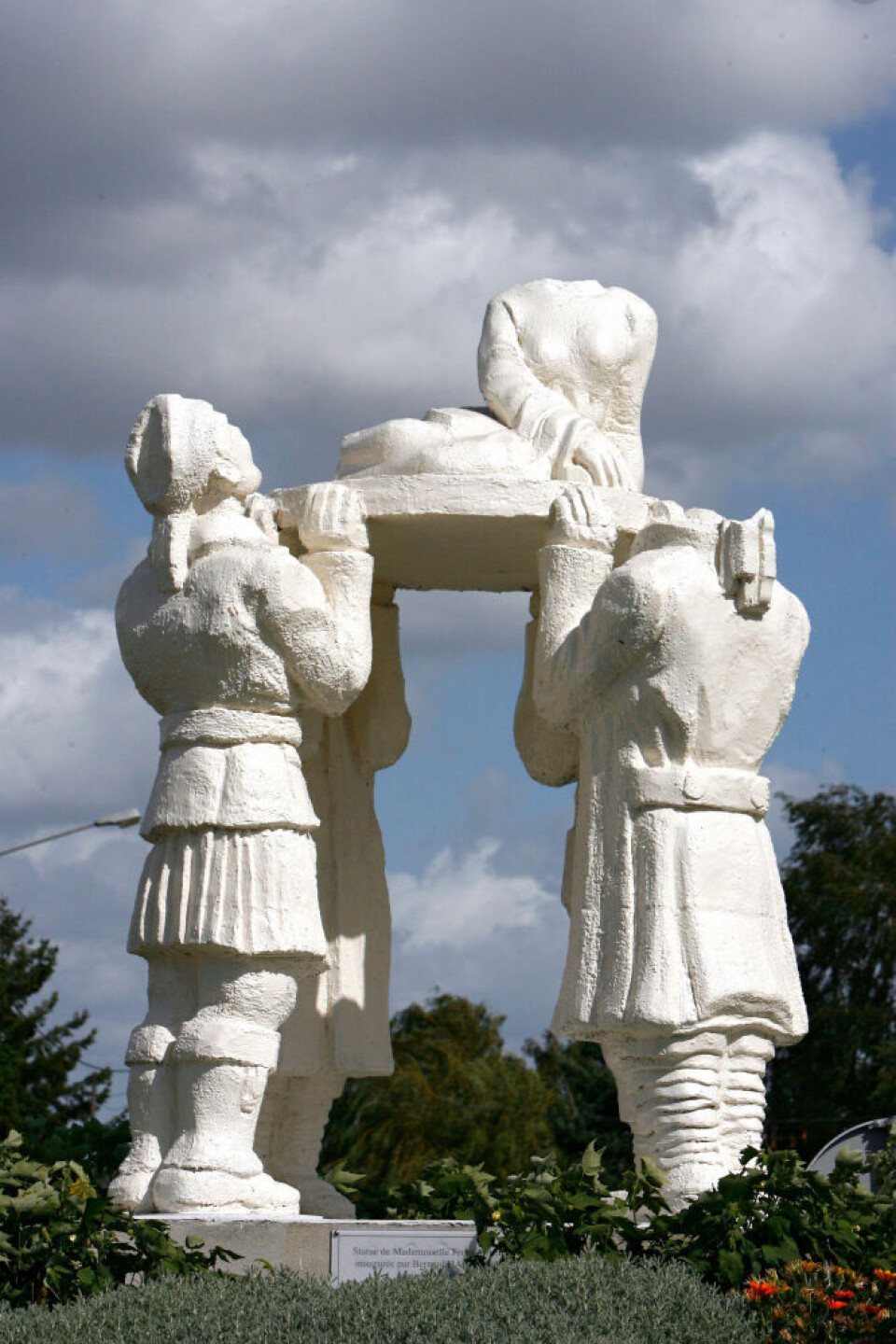-
What happens in France on November 11 bank holiday and are shops open?
It is the second public holiday of the month in France
-
Tributes paid to French Resistance fighter Madeleine Riffaud, who died at 100
As a teenager she survived torture by the Gestapo after killing a German officer
-
How to buy a 2024 remembrance poppy in France
The Royal British Legion has several branches in the country. You can also buy a French bleuet
Armentières’ historic bridge and bawdy song make for inspiring visit
Journalist Sally Ann Voak continues working through her late husband’s travel bucket list by paying tribute to a beloved friend – and unpicking a saucy French legend

One very special destination on the wish list of trips we made before Pat died in 2019 was to historic Armentières on the Belgian border near Lille.
It is a peaceful, elegant town today, but the scene of so much upheaval and tragedy during the wars.
The civic motto is Pauvre mais fière (‘Poor but brave’) and many families have certainly experienced hard times.
Reduced to rubble
This busy, once-prosperous centre of French weaving, spinning and brewing was reduced to rubble after World War One, then rebuilt, only to be occupied and bombed again during World War Two.

Two Croix de guerre medals and the Légion d’honneur were awarded to the town – proud reminders of its inhabitants’ courage and sacrifice.
In 1944, our friend, World War Two bomb disposal corporal Frank Mouqué, Légion d’honneur, helped rebuild Pont de l’Attargette, a strategic bridge over the canal.
His company arrived in Armentières after pushing east from the D-Day Normandy beaches towards Germany.
Shortly before he died, in April 2020, Frank was presented with a commemorative medallion by the mayor of Armentières. I hoped to stand on the bridge and pay my own tribute to our brave pal and his comrades.
Read more: Armentières still remembered by D-Day hero
Ravaged bridge
A 15-minute train journey from Lille took me to the town centre. My guide for the day was local historian Hans Landler, author of two books on Armentières’ wartime history.
Hans explained why the bridge, first constructed in 1878, is so important.
“It allows access from the north to the centre of the town so, for wartime forces, it was a vital artery. Due to its strategic importance, it has been destroyed and rebuilt five times!”
In 1914, the bridge was blown up by the German army then, in March 1915, partially reconstructed by the British but mined again before their retreat.
As the German army advanced, they replaced it with a footbridge, which they destroyed in 1918 during their push back from the town.
In 1921, along with much of the rest of Armentières, it was rebuilt.
Symbol of rebirth
Later, in 1940, as the British army fled to Dunkirk, the bridge was thought to be too important to leave intact.
During their occupation of the town, the German army rebuilt it yet again and, in September 1944, just before they retreated, destroyed it once more.
Frank and his battle-weary comrades were next on the scene: having survived the Normandy landings, the soldiers made a pretty good job of repairing the bridge, until 1955 when civic authorities authorised proper reconstruction work.
As I stood there in now-tranquil surrounds holding flowers and a photograph of Frank wearing his red Chelsea Pensioner’s uniform, it was hard to imagine such horror and turmoil.
“The bridge is still a main thoroughfare and serves as a reminder of our suffering. It is also our symbol of rebirth and hope,” said Hans.
Mademoiselle from Armentières
The town is also known for the bawdy World War One song Mademoiselle from Armentières, whose various lyrics describe a local woman of loose morals whose company was enjoyed by frontline soldiers.
We visited the town cemetery, where the woman credited with being the original Mademoiselle, Marie Lecocq (1890-1945) is buried.

A statue in honour of Mademoiselle was unveiled there in November 2008. It depicts four soldiers hoisting a lady on a plinth. She does not look like Marie. Why?
“The sculptor decided to make her face and figure unrecognisable because we do not know the full truth and he did not want to upset her family,” Hans said.
“Poor Marie is thought, wrongly, to have been a lady of easy virtue. In fact, she was defending her honour when soldiers were taunting her.”
Waitress to war song
In March 1915, Marie, twice married, was working as a waitress when a group of soldiers became a bit fresh and she gave one a slap.
A cafe customer, composer Edward ‘Red’ Rowland, who had been hired to entertain British troops, was there and the incident inspired him to write the song with the first line: ‘Mademoiselle from Armentières, parlez-vous?’
The catchy tune launched a show in Canada and more risqué lyrics were added by British soldiers.
Despite her notoriety, Marie married for a third time in 1926 and is said to have led a blameless life.
Themed restaurant
Stéphanie Colart is keeping the legend alive, having transformed her restaurant in the historic centre of town into a Mademoiselle from Armentières museum and eating experience, complete with World War One décor, tales and performances.
She collects donations for the Royal British Legion’s Poppy Appeal.
“I keep an open mind about our naughty lady and her real identity. The British Army was responsible for soldiers’ welfare, and that included establishing various groups of ladies for relaxation and amour.”
Museum pieces
Laurent Joye’s huge collection of photographs, militaria and uniforms, housed in a former convent in the town, also includes the Mademoiselle story. The Musée de l’union des anciens combattants d’Armentières opened in July 2014 and is “a dream come true”, he told me.
“I joined the French Foreign Legion at 17, after a turbulent childhood here. When I came home in 1994, my military experiences were still raw.
“I wanted to settle down and pay homage to those who suffered in two world wars.
“I was helped by local people who searched their houses for historical items and I also received donations from abroad.”
Laurent says most local women worked tough, exhausting jobs during both world wars and had children to look after, so their reputation for easy virtue is doubtful, despite the song.
‘Touched’
I still have three trips to go on my ‘For Pat’ travel list. I have already ticked off a Grand Massif trek, a Haute Savoie chateau, Bordeaux, Toulouse, Nice and Avignon.
Dramatic mountains, beautiful cities and spectacular coastal views have thrilled me, but the small, heroic town of Armentières with its warm, proud people touched my heart. Thanks, Pat.
Related articles:
Bucket list trip along French Riviera in memory of romantic husband
French adventure in memory of beloved Pat
D-day hero Frank has died aged 95























